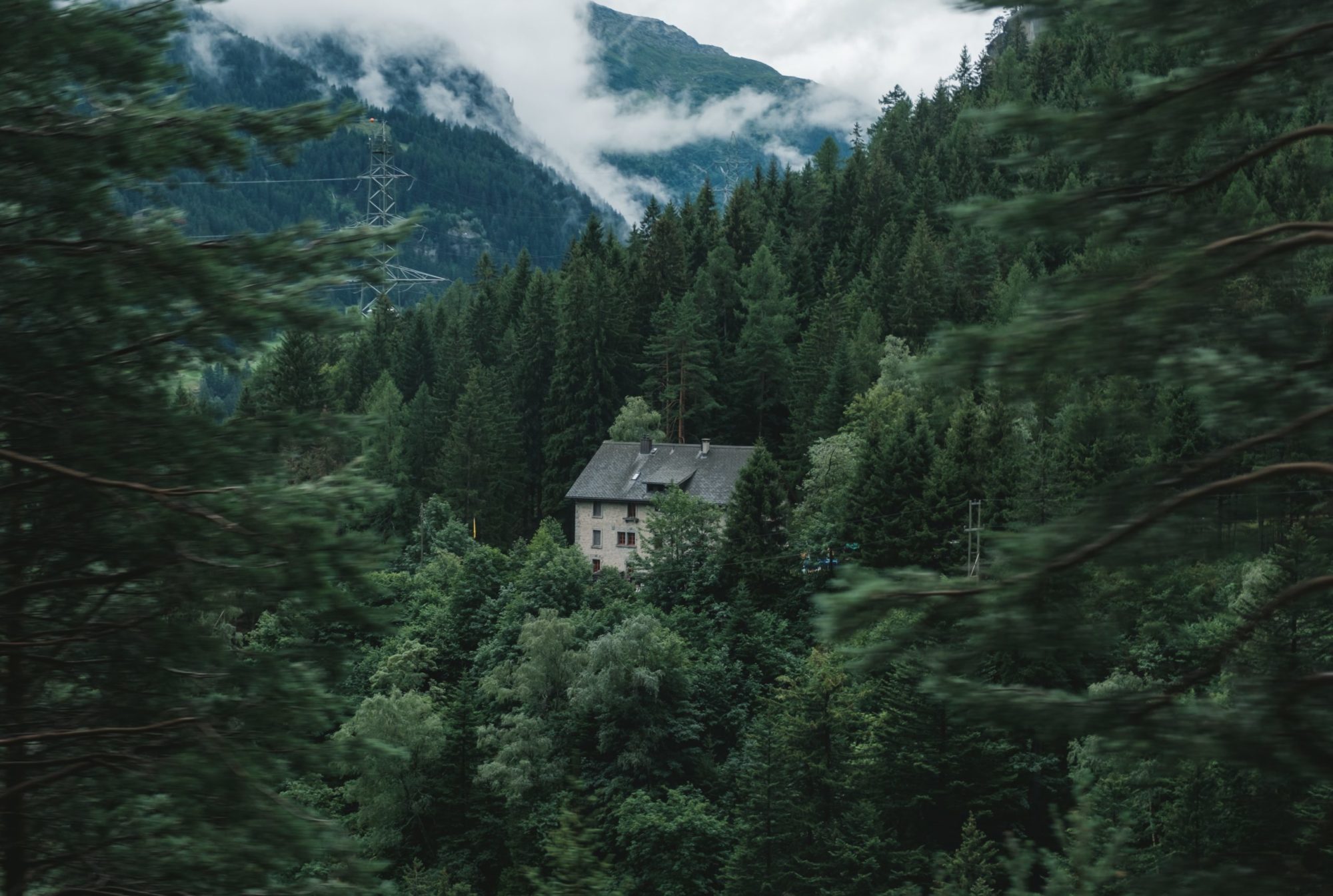Do you know how the Soviet Union ceased to exist? How it actually ceased to exist? There seems to be a general consensus in the US that communism was doomed to fail — and it did in 1989 when the Berlin Wall fell. The USSR, however, lived on for two more years. It was dismantled after an unexpected turn during a rambunctious weekend in a Belorussian hunting lodge in December 1991.
Today, Dec. 8, 2021, marks the thirtieth anniversary of the peaceful dissolution of a global superpower. Its graceful exit from the international arena — and the global amnesia about this turning point in history — have long masked the utterly fascinating story of the events that unfolded at Belavezha. We tell this story and its surprising twists and turns in “How to Kill a Superpower: Lessons from the USSR,” a podcast mini-series about the hunting trip that ended with the dissolution of the Soviet Union.
As first and second-generation immigrants from the Soviet Union to the US, for us this is also a personal story. Leaving one’s country is never easy, but it is made all the more difficult when the past left behind is lost to history. How can we be strangers to this history, and to the land where it took place, when we and our loved ones still remember everything? This is a question many Soviet immigrants have asked themselves for a long time.
The true history of the Belavezha agreement and the way history remembers it are separated by a gaping chasm. Thirty years since the agreement, an outcome that was once seen as impossible is now regarded as inevitable. The passage of time has not made us more objective, as the USSR has passed into mythology in the public imagination. Any educated adult can tell you about the fall of the Berlin Wall, but who remembers Belavezha? We believe that this selective amnesia is no accident.
THE FATEFUL WEEKEND
Who pulled the trigger on the Soviet Union? It was three politicians, two of whom are mostly forgotten: Stanislav Shushkevich of Belarus, Leonid Kravchuk of Ukraine, and Boris Yeltsin of Russia. None of them went to the Belavezha hunting lodge intending to dissolve the USSR. Each had his own, less ambitious, agenda. Unbeknownst to them, the forces of history had other plans. Each man was pushed, in his own way, to do the unimaginable at the dining table of the hunting lodge, where vodka was flowing like courage in liquid form.
As we dug deeper into the details of that fateful weekend in the Belavezha forest, we discovered that spontaneity and spur-of-the-moment initiative were central to the dissolution of the USSR.
Belarus’ unlikely and reluctant leader, Shushkevich, was a physicist who was more comfortable in his lab than at the negotiating table. He had once tutored an enigmatic American defector in the Russian language, before his student returned to his country and was arrested and then murdered for assassinating its president. In 1991, Belarus was experiencing an acute shortage of natural gas. Shushkevich wanted to convince Yeltsin that Russia should keep sharing its gas with his country in the “old Soviet style,” free of charge.
Kravchuk, who was just elected the president of the Soviet Socialist Republic of Ukraine, couldn’t care less about Belarus’ gas shortage. A wave of Ukrainian nationalism was sweeping his country, and he wanted to milk it for all the political power he could. He was a peculiar man, who once described himself as someone “who doesn’t take an umbrella because he hopes to slip between the raindrops.”
Yeltsin’s position was more precarious. Soviet leader Mikhail Gorbachev had insisted Yeltsin use this meeting to renegotiate the new union treaty that had been voted down earlier that year. Yeltsin certainly wanted change in some form, but was worried about going too far and being treated as a traitor. He was so afraid of what Gorbachev, or the hawks at the Soviet Ministry of Defense, might do to him that he drank until he passed out before his flight back to Moscow.
INVESTIGATING THE END
As we dug deeper into the details of that fateful weekend in the Belavezha forest, we discovered that spontaneity and spur-of-the-moment initiative were central to the dissolution of the USSR. The country was not necessarily “destined to fall,” and certainly not in the way that it did. In fact, it wasn’t just the party elites in Moscow who wanted to preserve their country. The other superpower, the US, was also convinced that the USSR must survive. The alternative, some feared, was Yugoslavia — but with nuclear weapons.
In our research, we came across a declassified CIA document, prepared just five months before the USSR dissolved. It laid out four scenarios for the country over the next five years: 1) A chronic crisis with no major changes, 2) the Baltic States, Georgia, Armenia, and Moldova achieve independence while a new, smaller system forms with relatively little violence, 3) regression with nationalist hardliners enacting martial law, and 4) fragmentation in the form of a violent and chaotic collapse of the system. None of these predictions, however, materialized.
In his infamous “Chicken Kiev” speech, penned by Condoleezza Rice and delivered just four months before the USSR dissolved, President George H.W. Bush made it clear that the US did not support Ukraine’s “suicidal nationalism.” Bush and his Secretary of State James Baker feared violent disintegration. Keeping the Soviet Union alive, even with a weak center, was the best option, they judged.
Before informing Gorbachev of the news, Yeltsin called Bush to announce that he and his crew had dissolved the USSR. Bush’s response was hesitant: “Well, good luck, and thank you for your call. We are interested in the reaction from the center and other republics. Time will tell, I guess.” Bush clearly did not see this coming, and he worried about what would come next.
HOW TO MAKE SENSE OF RIVALS
Now that we are sufficiently removed from the Cold War, we must begin the process of revisiting its final days. They may hold important clues about how we make sense of our rivals, both historically and today. China has now replaced the USSR in the imaginations of US policymakers and some leading analysts. As Fareed Zakaria put it on “Real Time with Bill Maher,” China is “good at technology,” whereas all the USSR could do by the 1970s “was build missiles, and not particularly well.” This is a far cry from Reagan’s warning of the USSR’s “enormous and unparalleled military buildup” in his 1983 “Evil Empire Speech.”
All countries face the problem of unreliable and incomplete information about each other. This, Prussian military theorist Carl von Clausewitz famously observed, “tends to make things seem grotesque and larger than they really are.” Revisiting the final days of the USSR reminds us of how poorly we tend to assess our rivals, how unpredictable and quick historic decisions can be, and the importance of maintaining direct lines of communication at different levels of leadership.
Yelena Biberman is an associate professor of political science at Skidmore College, associate at Harvard University’s Davis Center, and nonresident senior fellow at the Atlantic Council. She is author of Gambling with Violence: State Outsourcing of War in Pakistan and India (Oxford University Press, 2019).
Zachary Troyanovsky is a late Soviet-era researcher, audio engineer, and associate at Harvard University’s Davis Center. He is also the co-founder and head of publishing for Forte Creative Group, a multi-stakeholder music cooperative in the Capital Region of New York.




















